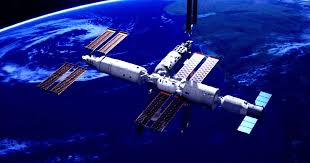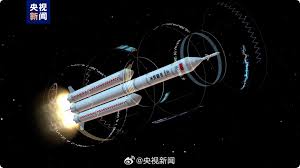China’s Artificial Photosynthesis Mission: Can be a game-changer for both Space Travel and Earth
NASA is now preparing to go back to the moon, but this time it is not facing Russia but China. Just like there was a space race between the USA and the USSR during the Cold War, now a similar battle is being created between China and America. In this battle, China has made such a scientific breakthrough that will not only change space missions, but can also help in fighting the climate crisis on Earth.
New equation of oxygen and carbon dioxide
When humans first started researching space, it was believed that oxygen was only found on Earth. But new research has shown that oxygen is one of the most abundant elements in the universe – along with helium and hydrogen. Still, oxygen is not enough for living organisms like us on any other planet, and even a few seconds without oxygen can be fatal for humans.

China has turned this challenge into an opportunity. They conducted a successful experiment in artificial photosynthesis that created oxygen and energy-rich materials from carbon dioxide and water – just as plants do naturally.
Artificial Photosynthesis: A Space Miracle
This experiment was conducted on January 18 in the Mengtian module of China’s Tiangong Space Station. Astronauts used equipment kept in a special “space drawer” to create essential life-support elements from CO₂ and water.
Artificial photosynthesis is a revolutionary process. It could make future space missions to the moon or Mars more sustainable. Meaning, astronauts would not need to carry oxygen and food from Earth every time. They can recycle CO₂ in their spacecraft to make oxygen and edible materials.
Game-changer for Earth too
Not just space, this technology is a signal of a big transformation on Earth too. Chinese scientists have also developed a way to convert CO₂ into high-protein food. This food will be rich in amino acids, which are essential for human health.
This means that the carbon dioxide that we consider the villain of pollution and global warming can now be converted into a valuable resource. This idea can become the basis of a circular carbon economy – in which carbon is not only reduced, but is also used, by reusing it.
400 Million Tons CO₂: China’s Green Initiative
In the last 40 years, China has absorbed 400 million tons of CO₂ every year through massive tree plantations and environmental projects. These figures show that China is serious about fighting climate change not only in space but also on Earth.
These large-scale afforestation and green projects have significantly reduced global carbon emissions from a land use perspective. And now that they have also found a formula to convert CO₂ into protein-rich food, they have found a new way to solve the food security crisis.

What in the future?
Experts say that microbial protein systems can be made more efficient by selectively breeding high-yield microbial strains. Such innovations could prove to be a boon in the future for areas where drought, famine or food shortages are common.
China could become the global leader in such technologies, especially in developing regions where food insecurity is a chronic issue. Artificial photosynthesis and CO₂-based food production could change the definition of agriculture.
At The Last
China’s megaproject, in which they are absorbing the Earth’s atmosphere (carbon dioxide) and converting it into something productive, is an example of a futuristic approach. This is a new light for space travel and a new hope for the Earth. When the world is facing pollution and food crisis, China has shown a technology which has a sustainable solution to every problem.
If other countries also invest and research in this direction, then it is possible that the planet of tomorrow will not only survive but thrive.
